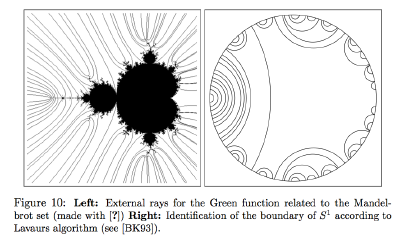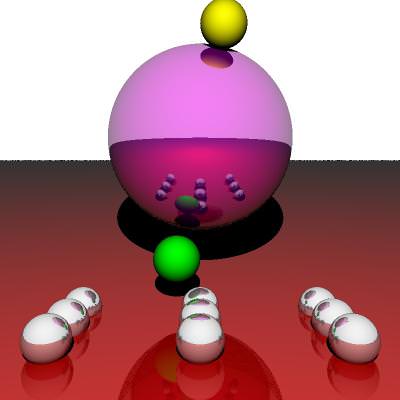Below you will find pages that utilize the taxonomy term “LISP”
Sensitive information blanked
The gnusnotes.el package, with delete and edit capabilities is now available in the marmalade package repository. This post just explains why, how and what (code at the end, too)
Last month I switched email clients (for the 4th time in the past year.) I’ve passed through gnus, Thunderbird, mail.app and settled with Sparrow. Just 2 days before Sparrow was bought by Google I left for gnus (lucky moment!
And e/2 Appears from Nowhere! (Follow up to 'And e Appears from Nowhere')
3 minutes read | 464 words
You may remember a post I wrote a month ago titled And e Appears from Nowhere. It was based (through some blogs I read) on a footnote from Prime Obsession(Amazon affiliate link) by John Derbyshire. The footnote reads:
Here is an example of e turning up unexpectedly. Select a random number between 0 and 1. Now select another and add it to the first. Keep doing this, piling on random numbers.
Today, while I was thinking of the best implementation solution for the vector operations, I realised that I am just not motivated by writing a raytracer in Forth. I’ll have to find something more interesting, or at least, more Forth minded to work on.
If I want to raytrace, better to improve the Lisp raytracer, which is sitting idly in my Code/Lisp folder. Steps that will follow in the raytracer path:
Stochastic hill climbing: Sisyphus pushes an image Last year, Slashdot published this interesting piece of work: Genetic evolution of the Mona Lisa. The idea is to approximate an image by a certain number of semitransparent polygons, randomly chosen. I liked very much the idea, and as every year I try to come up with some Christmas postcard related to maths or programming I gave it a try. So I wrote a LISP version… way too slow.
A LISP random triangle generator. Also wrote a C version.
As you may remember, I spent quite some time this August with Lavaurs algorithm for the topological identification of the circle corresponding to the Mandelbrot set. After that, I spent quite some more trying to do pictures of external rays to show side by side. I was not able… and then found Mandel.
Thanks to Mandel, LISP and my Lavaurs code
Really nice program, with lots and lots of options (and I met the programmer, which happens to be also mathematician, we met at a conference).
From flickr
September is to months as Monday is to weekdays
September is again here, like a new year in more than a sense. I have no new “New Year’s promises”, since the beginning of the year. In fact, most of the things I wanted to do are already done, on the way to be done or I gave up. Well, let’s summarize what I shall do these three months to end 2009
Have you ever wondered how to take a screenshot remotely, via the command line in a Linux system? Here is a way to do it. At the bottom you can also find a script to move it to the root of your personal page (if you have) to open the screenshot in your browser.
I have a Lisp program running inside Slime (The Superior Lisp Interaction Mode for Emacs) in an emacs instance running in my office computer.
These days I’ve been busy programming a version of Lavaurs algorithm for the idenfication of circle chords: the abstract Mandelbrot set.
The images don’t look like much, but the output of the program is nicer: it outputs an Encapsulated PostScript file which looks sharper. But when converting to png with ImageMagick some distortion appeared.
Lavaurs chords, depth 13 cutoff
Lavaurs chords, depth 5
Lavaurs chords, depth 13
Lavaurs algorithm on course
Like almost every year, August comes with a lot of pending To Do lists… This year, it is choking full, mostly of work related issues, and some unknotted threads waiting to be finished. And in two and a half weeks I’ll head for Paris, and then my “vacation” is over.
Yesterday I wasted my morning: bought my orange belt, set up the external monitor for my netbook, configured the printer, fotocopied two pages of a book and drank an horchata with a friend.
This evening I was bored at home, and decided to have a look at my old Lisp raytracer… a project that just went idle a year ago. I picked up another programming project I had idling for a long time (an emacs lisp project, to interact with my console-based fractal drawers). I had a coding breakthrough that time, and managed to advance quite a bit in a little time, so today I tried again.
Stephen Wolfram (owner of Wolfram Research) has released (after announcing it in March) Wolfram Alpha, a kind of web search aimed at natural language and intelligent answers. JME pointed me to this question:
Taken from Wolfram Alpha
The strange thing about it is that is is fully written in Mathematica (or so they say, 5 million lines of code). Strange indeed, Mathematica isn’t a particularly fast or “comfy” programming language.



